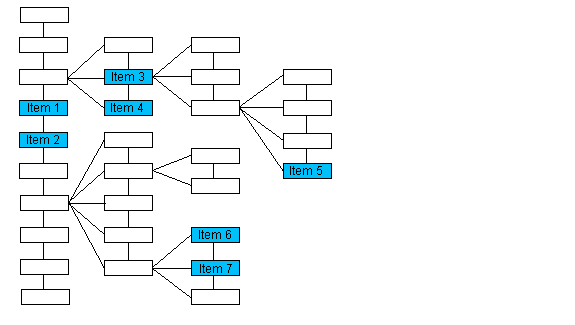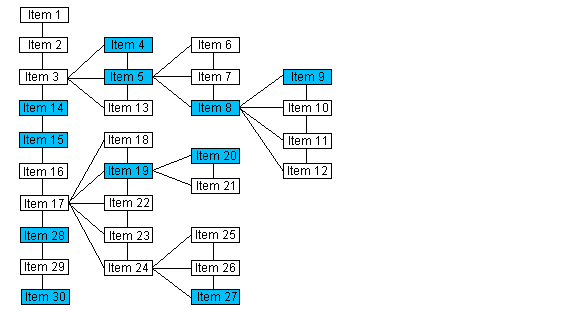L_DicomGetNextIOD
#include "Ltdic.h"
L_LTDIC_API pDICOMIOD L_DicomGetNextIOD(pIOD, bTree)
pDICOMIOD pIOD; |
pointer to a DICOMIOD structure |
L_BOOL bTree; |
flag that indicates how to evaluate the IOD Structure |
Returns a pointer to the item in the IOD Structure that immediately follows the specified item.
| Parameter | Description | |
| pIOD | Pointer to a DICOMIOD structure that contains an item in the IOD Structure. A pointer to the item in the IOD Structure that immediately follows this item will be returned. | |
| bTree | Flag that indicates how the IOD Structure will be evaluated. Possible values are: | |
| Value | Meaning | |
| TRUE | Evaluate the IOD Structure as a tree. | |
| FALSE | Evaluate the IOD Structure as a list. | |
Returns
!NULL |
A pointer to a DICOMIOD structure that contains the item in the IOD Structure that immediately follows the item specified in pIOD. |
NULL |
There is not an item following pIOD. (pIOD is the last item in the IOD Structure.) |
Comments
If the IOD Structure is evaluated as a tree structure, this function returns the next item on the same level as pIOD with the same parent as pIOD. Please note that the numbering of the items in this illustration is arbitrary and does not imply order.

If the passed pointer points to : |
The function returns a pointer to : |
Item 1 |
Item 2 |
Item 3 |
Item 4 |
Item 5 |
NULL |
Item 6 |
Item 7 |
If the IOD Structure is evaluated as a list, the next item in the list is returned. Please note that the numbering of the items in this illustration does indicate the order of the items when the IOD Structure is evaluated as a list.

If the passed pointer points to : |
The function returns a pointer to : |
Item 14 |
Item 15 |
Item 4 |
Item 5 |
Item 8 |
Item 9 |
Item 19 |
Item 20 |
Item 27 |
Item 28 |
Item 30 |
NULL |
The following functions will also help you navigate the IOD Structure as either a tree or a list:
If you evaluate the IOD Structure as a tree, you can also use the following functions to navigate the tree:
Required DLLs and Libraries
|
For a listing of the exact DLLs and Libraries needed, based on the toolkit version, refer to Files To Be Included With Your Application |
Win32, x64, Linux.
Example
This example displays in a list-box control all classes from the IOD table
L_INT DicomGetNextIODExample(HWND hDlg){pDICOMIOD pIOD;pIOD = L_DicomGetFirstIOD(NULL, TRUE);while (pIOD != NULL){SendMessage(hDlg, LB_ADDSTRING, (WPARAM)0, (LPARAM)(LPCTSTR)pIOD->pszName);pIOD = L_DicomGetNextIOD(pIOD, TRUE);}return DICOM_SUCCESS;}
© 1991-2017 Apryse Sofware Corp. All Rights Reserved.
